- Home
- Alison Weir
The Lady in the Tower: The Fall of Anne Boleyn
The Lady in the Tower: The Fall of Anne Boleyn Read online
ALSO BY ALISON WEIR
Mistress of the Monarchy:
The Life of Katherine Swynford, Duchess of Lancaster
The Lady Elizabeth:
A Novel
Innocent Traitor:
A Novel of Lady Jane Grey
Britain’s Royal Families:
The Complete Genealogy
The Six Wives of Henry VIII
The Princes in the Tower
The Wars of the Roses
Children of Henry VIII
The Life of Elizabeth I
Eleanor of Aquitaine
Henry VIII: The King and His Court
Mary, Queen of Scots, and the Murder of Lord Darnley
Queen Isabella
This book is dedicated to a dear friend,
Father Luke
(Rev. Canon Anthony Verhees),
to mark his eightieth birthday.
PREFACE
This is where my interest in history began, many years ago, with Anne Boleyn and the dramatic story of her fall. That interest has never abated—I have written at length on Anne in two earlier books, The Six Wives of Henry VIII and Henry VIII: King and Court, and in a number of unpublished works—and I know that it is shared by many: the crowds who visit the Tower of London to see the supposed site of her scaffold, or flock to Hampton Court, where Anne stayed in happier days, or to Hever Castle, her family home, or Blickling, the place of her birth. The fascination is evident in numerous sites on the Internet, the almost-regular appearance of biographies of Anne Boleyn, films and television dramas about her, and the numerous letters and e-mails I have received from readers over the years.
Yet never before—surprisingly—has there been a book devoted entirely to the fall of Anne Boleyn, and it has been a deeply satisfying experience having the scope to research in depth this most discussed and debated aspect of Anne’s life. This has allowed me to achieve new insights and to debunk many myths and misapprehensions. It has been an exciting project, and I have constantly been amazed at what I discovered.
Coming to this subject afresh, I have—as always—questioned all my preconceptions and assumptions, and sometimes had to revise them, which of course exposes errors in my own previous books, and indeed in nearly every other book on Anne, however diligently researched. In writing a full biography, the historian does not have the opportunity to go into such detail—in research, narrative, and analysis—as I have had the good fortune to be able to do in a book that essentially covers a period of four months.
I wish to stress that this book is based largely on original sources, and that the conclusions in it are my own, sometimes reached objectively after reading the various theories. This might sound like a statement of the obvious, but in some aspects, my conclusions coincide with others’. That has often been pure coincidence. I purposely put off reading all the modern biographies of Anne until my research from contemporary sources was completed and the book was in its penultimate draft. I have gratefully given due credit to historians whose theories and interpretations have informed my work, but otherwise all conjectures, inferences, and conclusions are my own, independently reached without reference to the biographies. I wish in particular to pay tribute to those by Professor Eric Ives, whose theories about the reasons for Anne Boleyn’s fall have been particularly illuminating.
Since contemporary sources are key factors in studying Anne Boleyn’s fall, readers may wish to look at the section “Notes on Some of the Sources,” which appear after the main text, before reading the book. Historians must always decide what weight to give each source, and this guide is there to evaluate the reliability and veracity of the chief ones for the period.
The approximate modern worth of monetary amounts has been given in brackets after each sum mentioned in the text.
Above all, this book has been a labor of love, as well as an exciting quest for the truth—or as near as anyone can get to the truth.
I am deeply grateful for the help and support of many kind and generous people: firstly, two dear friends and fellow historians, Tracy Borman, for so generously lending me the first chapter of her forthcoming book on Elizabeth I, for hours spent in convivial discussion about aspects of Anne and Elizabeth that are common to both our subjects, and for joining me for sell-out events mischievously entitled “The Whore and the Virgin;” and Sarah Gristwood, for so thoughtfully obtaining for me the one rare biography of Anne that I had no time to track down, and for showing me a better way to write a book!
I should also like to thank Glen Lucas and Karen Marston, for so generously giving of their time, without charge, to translate documents from Latin and French; Patricia Macleod of Sutton Library, for putting me in touch with Glen Lucas and for organizing such wonderful events; Sue Wingrove of BBC History magazine, for very kindly sending me photocopies of out-of-print articles; Canon Anthony Verhees (Father Luke), for advice and information on funeral masses in the sixteenth century and other issues raised by Anne Boleyn’s fate; the historian Christopher Warwick, another dear friend, for advice, and for photographing a model of the Tower of London based on the 1597 map; Monica Tandy and Alan Mudie, for information on ghost stories about Anne Boleyn; Samantha Brown and Ann Morrice of Historic Royal Palaces, for their wonderful enthusiasm for Tudor history and for making it possible for me to speak about Anne and Henry VIII at Hampton Court, which has been an enormous privilege.
The list of people who have supported me in various ways whilst I was writing this book is a long one, but I wish especially to mention my agent, Julian Alexander; my commissioning editors, Will Sulkin at Jonathan Cape in London and Susanna Porter at Ballantine Books in New York; my editorial director, Anthony Whittome, his assistant James Nightingale, and the dedicated and helpful publishing teams at Random House in the United Kingdom and the United States. I am tremendously grateful to you all.
More special thanks must go to my family and friends, who have all had to put up with me during the writing of this book, in particular my wonderfully supportive husband, Rankin; my son, John; my daughter, Kate; my mother, Doreen Cullen; and my cousin, Christine Armour. I wish also to express my gratitude to (in no particular order) Ian Robinson, Kate Williams, Siobhan Clarke, Anthony Cunningham, Leza Mitchell, Richard Foreman, Alison Montgomerie, Roger England, Joan and John Borman, David Crothers, Richard Stubbings, Kathleen Carroll, Ian Franklin, Jean and Nick Hubbard, Nicholas and Carol Bennett, Anthony and Jackie Goodman, Pauline Hall, Karin Scherer, Gary and Barbara Leeds, Rose Lukas, John and Joanna Marston, Anita Myatt, Josephine Ross, Burnell and Shelley Tucker, Monica and John Tyler, Peter Taylor, Frank and Janet Taylor, Nicola Tallis, Alex von Tunzelmann, Jane Robins, Alice Hogge, Justin Pollard, Nellie Verhees, Kenneth and Elizabeth Weir, Ronald and Alison Weir, Martha Whittome, Jessie Childs, Helen Rappaport, Lynn and Anne Saunders, Jane Furnival, Mavis Cheek, Molly Bradshaw, Dave Musgrove and many more!!
You have all been wonderful in so many ways—thank you.
Alison Weir,
Carshalton, Surrey,
Christmas 2008
CONTENTS
PREFACE
LIST OF ILLUSTRATIONS
GENEALOGICAL TABLES
PROLOGUE The Solemn Joust
CHAPTER 1 Occurrences That Presaged Evil
CHAPTER 2 The Scandal of Christendom
CHAPTER 3 The Frailty of Human Affairs
CHAPTER 4 Plotting the Affair
CHAPTER 5 Unlawful Lechery
CHAPTER 6 Turning Trust to Treason
CHAPTER 7 To the Tower
CHAPTER 8 Stained in Her Reputation
CHAPTER 9 The Most Mischievous and Abominable Treasons
CHAPTER 10 Mo
re Accused than Convicted
CHAPTER 11 Fighting Without a Weapon
CHAPTER 12 Just, True, and Lawful Impediments
CHAPTER 13 For Now I Die
CHAPTER 14 When Death Hath Played His Part
CHAPTER 15 The Concubine’s Little Bastard
CHAPTER 16 A Work of God’s Justice
APPENDIX: Legends
NOTES ON SOME OF THE SOURCES
SELECT BIBLIOGRAPHY
NOTES AND REFERENCES
LIST OF ILLUSTRATIONS
Anne Boleyn, as she probably looked at the time of her fall, artist unknown, sixteenth century, Nidd Hall, Yorkshire © The Trustees of the 16th Viscount Mountgarret Will Trust
Henry VIII, painting by Hans Holbein the Younger, c. 1536-7, Thyssen-Bornemisza Collection, Madrid, Spain/The Bridgeman Art Library
Jane Seymour, artist unknown, 1540s, the Society of Antiquaries of London/The Bridgeman Art Library
Sir Nicholas Carew, workshop of Hans Holbein, 1530s, by kind permission of the Trustees of the 9th Duke of Buccleuch’s Chattles Fund
The Lady Mary, painting by Hans Holbein the Younger, c. 1536, The Royal Collection © 2009 Her Majesty Queen Elizabeth II
Henry FitzRoy, Duke of Richmond, miniature by Lucas Horenbout, c. 1534-5, The Royal Collection © 2009 Her Majesty Queen Elizabeth II
Thomas Howard, Duke of Norfolk, painting by Hans Holbein the Younger, c. 1539, The Royal Collection © 2009 Her Majesty Queen Elizabeth II
Thomas Boleyn, Earl of Wiltshire, Tomb brass, c. 1539, St. Peter’s Church, Hever, Kent, photograph reproduced by kind permission of H. Martin Stuchfield
Signature of George Boleyn, Lord Rochford © British Library Board, Royal MS. 20 B XXI, f.2v
Signature of Mark Smeaton © British Library Board, Royal MS. 20 B XXI, f.98
Henry Parker, Lord Morley, painting by Albrecht Durer, 1523 © The Trustees of the British Museum
Thomas Cromwell, “Master Secretary,” School of Hans Holbein the Younger, c. 1533, Indianapolis Museum of Art, The Clowes Fund Collection
Sir William FitzWilliam, painting by Hans Holbein the Younger, c. 1536–40, The Royal Collection © 2009 Her Majesty Queen Elizabeth II
Elizabeth Browne, Countess of Worcester, Tomb effigy, St. Mary’s Church, Chepstow, photograph © Archie Miles/Collections Picture Library
Anne Boleyn, English School, c. 1580-1600, by kind permission of Ripon Cathedral Chapter
The Indictment against Anne Boleyn and Lord Rochford, The National Archives, Kew BK 8/9
Greenwich Palace, where Anne Boleyn was arrested, detail from “The Panorama of London” by Anthonis van den Wyngaerde, 1558, © Ashmolean Museum, University of Oxford/The Bridgeman Art Library
Anne Boleyn says a final farewell to her daughter, the Princess Elizabeth, painting by Gustaf Wappers, 1838, Collection SHUNCK*, Heerlen, The Netherlands. Photograph Klaus Tummers, Heerlen
The Tower of London, painting by Michael van Meer, Album Amicorum, 1615, Edinburgh University Library, Special Collections, ms.La.III.283, fol.346v
Anne Boleyn at the Queen’s Stairs, painting by Edward Matthew Ward, 1871, Sunderland Museum and Winter Garden, Tyne and Wear Archives and Museums
Anne Boleyn in the Tower, detail, Edward Cibot, 1835, Museé Rolin, Autun, France/Bridgeman Art Library
Anne Boleyn, Lady Shelton, stained glass, St. Mary’s Church, Shelton, Norfolk, photograph by kind permission of Simon Knott www.suffolkchurches.co.uk
Sir Thomas Wyatt, painting by Hans Holbein the Younger, c. 1535, The Royal Collection © 2009 Her Majesty Queen Elizabeth II
“To the King from the Lady in the Tower”: a disputed letter © British Library Board, Cotton Otho MS. C.X. f.232r
Westminster Hall, where four of Anne Boleyn’s co-accused were tried on May 12 1536. Parliamentary copyright image reproduced with the permission of Parliament, photograph by Deryc Sands
Henry Percy, Earl of Northumberland, painting by Francis Lindo, eighteenth century, collection of the Duke of Northumberland, photograph by Geremy Butler
Thomas Cranmer, Archbishop of Canterbury, painting by Gerlach Flicke, 1546, National Portrait Gallery, London/The Bridgeman Art Library
Sir Francis Weston and his wife, Anne Pickering, carved heads from marriage chest, c. 1530, used by kind permission of Saffron Walden Museum, Essex, photographs © Saffron Walden Museum
“Weston Esq. of Sutton Surrey,” artist unknown, sixteenth century, the collection at Parham House, West Sussex
Anne Boleyn driven mad: a later, melodramatic image, painting by Alessandro Guardassoni, 1843, Instituzione Galleria d’Arte Moderna, Collezioni Storiche, Bologna, photograph by Mario Berardi
Carving from the Martin Tower, photograph © Mary Evans Picture Library
Anne Boleyn’s falcon badge, without its crown and sceptre, in the Beauchamp Tower, photograph © Historic Royal Palaces
The site of the Queen’s Lodgings in the Tower of London, photograph by Tracy Borman
Gold and enamel pendant, made c. 1520, Victoria & Albert Museum, photograph, anonymous loan/V&A Images
The site of the scaffold on which Anne Boleyn was executed, photograph by Tracy Borman
The execution of Anne Boleyn, illustration from John Foxe’s Acts and Monuments, seventeenth century
The Royal Chapel of St Peter ad Vincula, photograph by Tracy Borman
Inside St Peter ad Vincula, photograph © Historic Royal Palaces
Memorial plaque said to mark the last resting place of Anne Boleyn, photograph © Historic Royal Palaces
Carved initials of Henry VIII and Anne Bolyen, Hampton Court Palace, photograph © Angelo Hornak Albany
Queen Elizabeth I’s ring of c.1575, used by kind permission of The Trustees of the Chequers Estate/Mark Fiennes/The Bridgeman Art Library
GENEALOGICAL TABLE 1
The Tudors
GENEALOGICAL TABLE 2
The Boleyns
GENEALOGICAL TABLE 3
The Fitz William Connections
PROLOGUE
The Solemn Joust
May Day was one of the traditional highlights of the English royal court’s spring calendar, and was customarily celebrated as a high festival. The May Day of 1536 was no exception, being marked by a great tournament, or “solemn joust,” which was held in the tiltyard at Greenwich, the beautiful riverside palace much favored by King Henry VIII, who had been born there in 1491. It was a warm day, and pennants fluttered in the breeze as the courtiers crowded into their seats to watch the contest.1 At the appointed time, the King took his place at the front of the royal stand, which stood between the twin towers of the tiltyard, in front of the recently built banquet hall. He was not yet the bloated and diseased colossus of his later years, but a muscular and vigorous man of forty-five, over six feet tall,2 red-bearded and magnificently dressed: “a perfect model of manly beauty,” “his head imperial and bald.”3
His queen of three years, Anne Boleyn, seated herself beside him. One of the most notorious women in Christendom, she was ten years younger than her husband, very graceful, very French—she had spent some years at the French court—and stylishly attired, but “not the handsomest woman in the world”: her skin was swarthy, her bosom “not much raised,” and she had a double nail on one of her fingers; her long brown hair was her crowning glory, and her other claim to beauty was her eyes, which were “black and beautiful” and “invited to conversation.”4
It was outwardly a happy occasion—May Day was traditionally the time for courtly revelry—and there was little sign of any gathering storm. Henry “made no show” of being angry or in turmoil, “and gave himself up to enjoyment.”5 He watched as the contestants ran their chivalrous courses, lances couched, armor gleaming. At this “great jousting,” the Queen’s brother, George Boleyn, Viscount Rochford, was the leading challenger and “showed his skill in breaking lances and vaulting on horseback,” while Sir Henry Norris, one of the King’s most trusted friends and household officers, led the defenders, �
��presenting himself well-armed.” When Norris’s mount became uncontrollable, “refused the lists, and turned away as if conscious of the impending calamity to his master,” the King presented him with his own horse.6 In the jousting, the poet-courtier Thomas Wyatt “did better than the others,” although Norris, Sir Francis Weston, and Sir William Brereton all “did great feats of arms, and the King showed them great kindness. The Queen looked on from a high place, and often conveyed sweet looks to encourage the combatants, who knew nothing of their danger.”7
Fifty years later, Nicholas Sander, a hostile Catholic historian, would claim that “the Queen dropping her handkerchief, one of her gallants [traditionally assumed to have been Henry Norris] took it up and wiped his face with it,” and that Henry VIII, observing this and seething with jealousy, construed the gesture as evidence of intimacy between them, and rising “in a hurry,” left the stand; but there is no mention of this incident in contemporary sources such as the reliable chronicle of Charles Wriothesley, Windsor Herald. In the late seventeenth century, Gilbert Burnet, Bishop of Salisbury, who painstakingly researched Anne Boleyn’s fall in order to refute the claims of Sander, would conclude that the handkerchief incident never happened, since “this circumstance is not spoken of by [Sir John] Spelman, a judge of that time who wrote an account of the whole transaction with his own hand in his commonplace book.”

 Richard III and the Princes in the Tower
Richard III and the Princes in the Tower Britain's Royal Families: The Complete Genealogy
Britain's Royal Families: The Complete Genealogy The Lady in the Tower: The Fall of Anne Boleyn
The Lady in the Tower: The Fall of Anne Boleyn Six Wives of Henry VIII
Six Wives of Henry VIII Elizabeth of York: A Tudor Queen and Her World
Elizabeth of York: A Tudor Queen and Her World Captive Queen
Captive Queen Innocent Traitor
Innocent Traitor The Marriage Game
The Marriage Game A Dangerous Inheritance
A Dangerous Inheritance Katherine of Aragón: The True Queen
Katherine of Aragón: The True Queen The Marriage Game: A Novel of Queen Elizabeth I
The Marriage Game: A Novel of Queen Elizabeth I Princes in the Tower
Princes in the Tower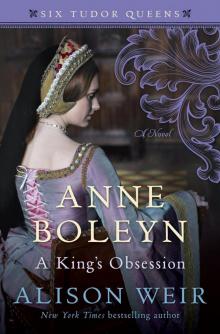 Anne Boleyn: A King's Obsession
Anne Boleyn: A King's Obsession Traitors of the Tower
Traitors of the Tower Mistress of the Monarchy: The Life of Katherine Swynford, Duchess of Lancaster
Mistress of the Monarchy: The Life of Katherine Swynford, Duchess of Lancaster Queens of the Conquest: England’s Medieval Queens
Queens of the Conquest: England’s Medieval Queens Eleanor of Aquitaine: A Life
Eleanor of Aquitaine: A Life Mary, Queen of Scots, and the Murder of Lord Darnley
Mary, Queen of Scots, and the Murder of Lord Darnley Henry VIII: The King and His Court
Henry VIII: The King and His Court Queen Isabella: Treachery, Adultery, and Murder in Medieval England
Queen Isabella: Treachery, Adultery, and Murder in Medieval England Katheryn Howard, the Scandalous Queen
Katheryn Howard, the Scandalous Queen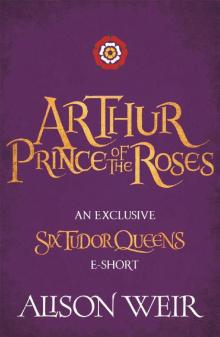 Arthur- Prince of the Roses
Arthur- Prince of the Roses The Wars of the Roses
The Wars of the Roses Eleanor of Aquitaine: By the Wrath of God, Queen of England
Eleanor of Aquitaine: By the Wrath of God, Queen of England Mary Boleyn: The Great and Infamous Whore
Mary Boleyn: The Great and Infamous Whore Jane Seymour: The Haunted Queen
Jane Seymour: The Haunted Queen Anna of Kleve, the Princess in the Portrait
Anna of Kleve, the Princess in the Portrait Lancaster and York: The Wars of the Roses
Lancaster and York: The Wars of the Roses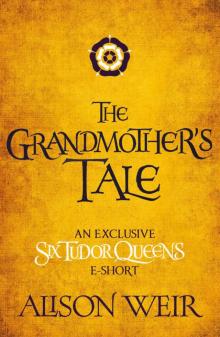 The Grandmother's Tale
The Grandmother's Tale The Princess of Scotland (Six Tudor Queens #5.5)
The Princess of Scotland (Six Tudor Queens #5.5) The Lady Elizabeth
The Lady Elizabeth Katherine Swynford: The Story of John of Gaunt and His Scandalous Duchess
Katherine Swynford: The Story of John of Gaunt and His Scandalous Duchess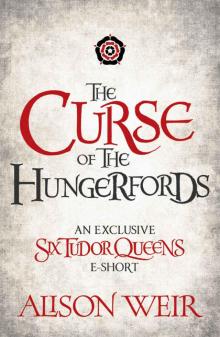 The Curse of the Hungerfords
The Curse of the Hungerfords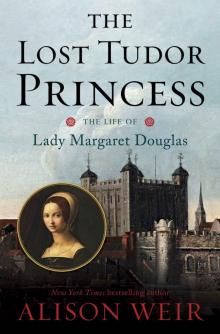 The Lost Tudor Princess: The Life of Lady Margaret Douglas
The Lost Tudor Princess: The Life of Lady Margaret Douglas Eleanor of Aquitaine
Eleanor of Aquitaine Mistress of the Monarchy
Mistress of the Monarchy The Lost Tudor Princess
The Lost Tudor Princess Henry VIII
Henry VIII Anne Boleyn, a King's Obsession
Anne Boleyn, a King's Obsession A Dangerous Inheritance: A Novel of Tudor Rivals and the Secret of the Tower
A Dangerous Inheritance: A Novel of Tudor Rivals and the Secret of the Tower Elizabeth of York
Elizabeth of York Katherine of Aragon, the True Queen
Katherine of Aragon, the True Queen Katherine Swynford
Katherine Swynford Wars of the Roses
Wars of the Roses Queens of the Conquest
Queens of the Conquest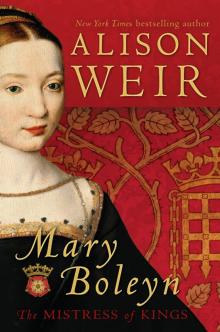 Mary Boleyn
Mary Boleyn Britain's Royal Families
Britain's Royal Families The Tower Is Full of Ghosts Today
The Tower Is Full of Ghosts Today Life of Elizabeth I
Life of Elizabeth I Anne Boleyn A King's Obssession
Anne Boleyn A King's Obssession Lancaster and York
Lancaster and York Jane Seymour, the Haunted Queen
Jane Seymour, the Haunted Queen Queen Isabella
Queen Isabella The princes in the tower
The princes in the tower